Livestock Grazing in Wilderness Areas
Wilderness is supposed to be a place where natural processes dominate, but domestic livestock grazing is permitted due to a major compromise designed to get the Wilderness Act passed.
“The grazing of livestock, where established prior to the effective
date of this Act, shall be permitted to continue subject to such
reasonable regulations as are deemed necessary by the Secretary of
Agriculture.”
The Wilderness Act of 1964, Section 4(d)(4)(2)
Cattle grazing designaed wilderness in the Sonoran Desert National Monument, Arizona. Photo George Wuerthner
No human activity has more impact on western federal lands than domestic livestock grazing. Grazing occurs on millions of acres of public lands, including lands designated as wilderness under the 1964 Wilderness.
Even though the 1964 Wilderness Act requires federal agencies to “preserve its natural conditions” in designated wilderness areas, an exception for livestock grazing is written into the original Act.
The Wilderness Act also requires that federal agencies maintain “primitive character” and “its community of life are untrammeled by man.” Untrammeled means unconfined, but livestock grazing is a domestication of the landscape and the opposite of “untrammeled.”
Domestic livestock and their impact on the land hardly “preserves natural conditions.” Indeed, livestock grazing occurs to some degree on 330 designated wildernesses.
Aldo Leopold, whom many consider one of the “fathers” of the Wilderness movement, wrote a recommendation for protecting what is now the Gila Wilderness in New Mexico. At that time, he advocated for a prohibition on roads but did not propose the removal of livestock.
However, grazing after visiting northern Chihuahua in 1936–37 Leopold began to question the viability of livestock in the arid West.
He wrote: “I sometimes wonder whether semi-arid mountains can be grazed at all without ultimate deterioration. I know of no arid region which has ever survived grazing through long periods of time, although I have seen individual ranches which seemed to hold out for shorter periods. The trouble is that where water is unevenly distributed and feed varies in quality, grazing usually means overgrazing.”
Nevertheless, livestock grazing remained a common feature of primitive areas, a designation the Forest Service implemented under Leopold’s guidance, and which was the forerunner of today’s wildernesses.
In writing the original draft of what became the Wilderness Act, Wilderness Society Executive Secretary Howard Zahniser characterized livestock grazing in wilderness as a “nonconforming” use that should be terminated.
Grazing allotment in the Gros Ventre Wilderness, Wyoming. Photo George Wuerthner
When the Wilderness Act was being debated in Congress, House Interior and Insular Affairs Committee Chairman Wayne Aspinall (D Colorado) would not allow the bill out of committee unless it contained a provision that permitted livestock grazing to continue in designated wilderness areas. Aspinall had effectively stalled the bill in committee from 1960 through 1963.
As a result of Aspinall’s efforts, the Wilderness Act concludes: “The grazing of livestock, where established before the effective date of this Act, shall be permitted to continue subject to such reasonable regulations as are deemed necessary by the Secretary of Agriculture.”
The phrase “shall continue” means that the simple designation as wilderness under the 1964 Wilderness Act cannot be used to justify terminating grazing.
Fences installed to benefit livestock management are ubiguous on public lands, and have numerous impacts, including the entanglement of wildlife as seen here. Photo George Wuerthner
One additional grazing compromise occurred in 1980 and was attached to the Colorado Wilderness legislation. Known as the Colorado Grazing Language, the Act effectively strengthens the hold of the livestock industry in designated wilderness areas. The Colorado Grazing provisions allow motorized use by ranchers (normally motors are prohibited in the wilderness), construction of new fences, water developments and other features that enhance livestock grazing in designated wilderness.
It’s important to note that livestock can be removed from wilderness areas, as with all federal lands, to meet resource needs like protecting watersheds, soils, and wildlife habitat.
Grazing permits are largely based on historical use and are typically attached to specific ranches. Nevertheless, grazing on public lands is a privilege, not a right. Managing agencies can terminate a grazing permit at any time—although termination seldom occurs due to the political power of the livestock industry.
Cattle grazing in the Blue Range Wilderness, New Mexico. Photo George Wuerthner
Many wilderness areas, particularly in the western United States, still have some level of domestic livestock grazing within their boundaries, including some of our most iconic wildlands like the Cloud Peak Wilderness, Gros Ventre Wilderness and Bridger Wilderness in Wyoming, Golden Trout Wilderness and the Marble Mountains Wilderness in California, Anaconda Pintler Wilderness and Red Rock Lakes Wilderness in Montana, the Wenimuche Wilderness in Colorado, the Owyhee Wilderness in Idaho, Gila Wilderness in New Mexico, Bob Marshall Wilderness in Montana, and many others.
So pervasive is livestock grazing on western federal lands that livestock-free areas are the exception, not the rule. For instance, in New Mexico’s Greater Gila Bioregion nearly 90% (4.2 million acres) of the Forest Service lands permit livestock grazing, including in the Gila Wilderness, Aldo Leopold Wilderness, and Blue Range Wilderness.
The impacts of livestock production fit into several categories.
Fecal material from livestock is one of the primary non-point pollution sources on federal lands. Photo George Wuerthner
WATER POLLUTION: Numerous studies have shown that the presence of livestock in a drainage often leads to E coli counts that exceed state water quality standards. For instance, one cow will “deposit” between 65-80 pounds of manure per day. By comparison, a human may excrete 1 pound of fecal matter. So a herd of 500 cattle utilizing a drainage is the equivalent of allowing a community of 5000 people to spread their fecal matter across such a landscape.
DISEASE TRANSMISSION: Some of the diseases that native wildlife suffers from come directly from domestic animals. For instance, Chronic Wasting Disease (CWD) was originally transmitted to wild ungulates from a sheep research facility in Coloradohttps://www.cdc.gov/prions/cwd/index.html. CWD is fatal and has spread to many western and mid-western states. Domestic sheep can also transmit pneumonia to wild bighorn sheep. The loss of many bighorn sheep herds is directly attributed to the transmission of the disease from domestic to wild sheep. Other diseases like Pink Eye, and brucellosis are also originally passed on to wildlife from domestic livestock sources.
Native predators are shot, trapped and poisoned on public lands, including in wilderness areas. Photo George Wuerthner
PREDATOR AND PEST CONTROL: Much of the West is an arid with limited productivity compared to the mid-west and the eastern United States. As a result, livestock must spread across large areas to find sufficient forage. This places them at greater jeopardy from predation than animals grazing the back forty of a mid-west farm.
For decades, ranchers have successfully lobbied the federal government to kill predators on public lands at taxpayer expense. With changes in social values, predators have recovered somewhat from this war on predators.
Nevertheless, predators, including cougar, wolf, bear, and coyote are regularly killed in wilderness areas where natural processes like predators are supposed to be sacrosanct. Indeed, predators can help to control the spread of diseases like CWD. In some wilderness areas, rodents like prairie dogs may also be poisoned or shot. For more on predator and livestock see Predator Defense.
Riparian areas are the thin, green lines of vegetation along waterways. Cattle are drawn to these areas where they consume vegetation, trample banks, and compact soils. Photo George Wuerthner
RIPARIAN DAMAGE: Riparian areas are the thin green lines of water-influenced vegetation along streams and lakeshores. In the arid West, 70-80 percent of all species depend on riparian areas for at least some of their food, shelter, and other habitat needs.
Unfortunately, domestic livestock, particularly cows, evolved in moist forests in Eurasia and gravitate towards the habitat that most approximate their evolutionary habitat—the heavily vegetated riparian areas.
Also, in much of the drier parts of the West, most forage is located in the thin green bands of vegetation along stream courses. Therefore, these critical habitats for many species, from trout to songbirds to grizzly bears, are typically degraded by grazing livestock. Livestock tramples and breaks down the streambanks and also consumes the vegetation, eliminating hiding cover and removing forage that would otherwise support native species.
Biocrusts protect soil from wind and water erosion, but are easily damaged by cattle trampling. Photo George Wuerthner
DAMAGE TO BIOCRUSTS
Most desert areas of the West have algae, lichens, and bacteria that reside on and just below the soil surface collectively known as biocrusts. Livestock hooves trample the biocrusts and compact soil making it difficult for biocrusts to colonized disturbed sites.
Biocrusts hold the soil together with micro-filaments, reducing erosion, as well as capturing atmospheric nitrogen and “fixing” it so it is available to plants. Biocrusts often colonize the surface between bunchgrasses and other plants and prevent the germination of weedy species like cheatgrass.
SPREAD OF WEEDS
Livestock is among the most important factors in the spread of weeds in the arid West. They accomplish this in three ways. First, their feces and hides will carry weed seeds to new sites. By destroying biocrusts, they facilitate the establishment and germination of weeds. Finally, by selectively grazing/browsing on native grasses and shrubs, they weaken these desirable plants, making it more difficult for them to compete against the weedy species.
FENCING AND OTHER INFRASTRUCTURE
The Wilderness Act permits ranching infrastructure to be built and/or maintained like water troughs, spring developments, line cabins, as well as fences that can block wildlife migrations and of course represents the opposite of an “unconfined” kind of experience.
Fences also impact other wildlife. Sage grouse are poor fliers and often collide with fences. In one study, 29% of all sage grouse died due to fence collisions. Fences also create survey posts for birds of prey that prey on sage grouse.
In addition, some specific wilderness legislation also allows ranchers to use motorized vehicles for access, (can’t expect cowboys to walk or ride a horse), despite the ban on motorized vehicles in a wilderness.
SOCIAL DISPLACEMENT
Many wildlife species, like elk avoid areas actively being grazed by domestic livestock. These animals are displaced into other habitats that is likely less suitable. If one assumes that elk or other animals are picking the habitat that is most suitable to their survival, if displaced, that creates an accounted impact on native wildlife. It may leave wildlife more vulnerable to hunters and/or predators. It may mean less productive forage. It may expose the animals to more severe weather.
It also affects other wildlife. For example, wolves may be harmed when elk are displaced, especially if they have pups at a den and cannot move with the prey.
In many areas, domestic animals consume the majority of all forage, leaving little for native herbivores. Photo George Wuerthner
FORAGE COMPETITION
Most forage is allotted to private domestic livestock, not wildlife on most public lands. As a result, livestock consume food that would otherwise support native herbivores, from ground squirrels to elk. Every pound of forage going into domestic sheep or cattle is much less food for native species.
Grazing of plants can also impact other wildlife. For instance, butterflies, hummingbirds, and bees all depend on flowering plants for food. If sheep or cattle mow down these plants, it indirectly reduces the food for these other species.
SOIL COMPACTION
Livestock is concentrated and often compact soil with numerous impacts on ecosystems. For one compacted soil decreases infiltration and thus increases water run-off, thus indirectly contributing to erosion and desertification. Livestock compaction also affects other native species. Many native bees, for instance, live in burrows in soil and can be negatively affected by soil compaction. Some desert tortoise, toads, and frogs seek out rodent burrow for shelter. Livestock can collapse burrows and thus limit habitat for these species.
OVERGRAZING
Some authorities think that any domestic livestock grazing is “overgrazing” especially if it occurs in the wilderness. Regardless of your perspective, livestock selectively graze plants, removing the better tasting and palatable plants and leaving behind the less desirable plants. As a result, they change the natural distribution of plants, typically reducing the native grasses and shrubs and contributing to the spread of the weedy species. Beyond that, the removal of significant amounts of vegetation can expose the soil to greater moisture evaporation, and thus contributing to desertification.
Cheatgrass is a highly flammable exotic that is favored by trampling and grazing by domestic livestock. George Wuerthner
EFFECTS ON FIRE REGIMES
Livestock can have numerous impacts on fire regimes. Wildfire is critical to healthy ecosystems, however, the temporal and spatial scale of fire is important. For instance, in some ecosystems like sagebrush, as well as juniper/pinyon woodlands, typically support major wildfires that occur hundreds of years apart. When livestock promotes cheatgrass, an exotic annual that is highly flammable, it can result in far more frequent wildfire which is outside of the historic frequency. If fires are too frequent, native ecosystems of sagebrush can be converted to cheatgrass.
On the other hand, in other situations like in low elevation dry ponderosa pine forests which historically experienced low severity fire at frequent intervals, livestock grazing by removing the fine fuels of grasses, can give trees a competitive advantage, leading to denser forest stands that may be more vulnerable to higher severity blazes.
PERMIT RETIREMENT
Voluntary Grazing Permit Retirement can facilitate livestock removal. Under permit retirement, a rancher agrees to remove his livestock and permanently give up access to grazing allotments in exchange for some agreed-upon sum of money.
Private parties usually provide this funding. In recent years, some wilderness legislation has included specific language allowing a permittee to “sell” their permit, which is then “retired” permanently. This option has been used in the legislation creating the Owyhee Wilderness legislation, the Boulder-White Cloud legislation, Steens Mountain legislation, and in the creation of the Cascade Siskiyou National Monument.
Another measure that could be implemented immediately is the closure of vacant allotments. Throughout the West, over 3 million acres of grazing allotments in designated wilderness are currently ungrazed. Permanently closing these allotments is legal.
Given the obvious contraction of allowing livestock grazing in designated wilderness where natural processes and native species are a valued feature of these landscapes, removing livestock and closing vacant allotments in wilderness areas should be a priority.



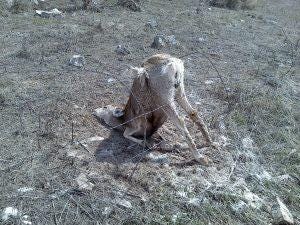
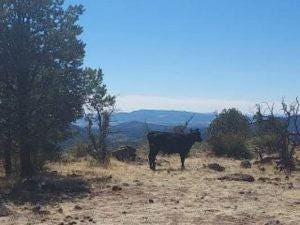
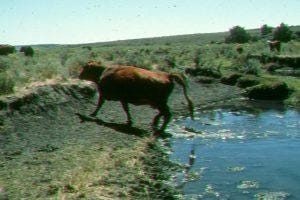
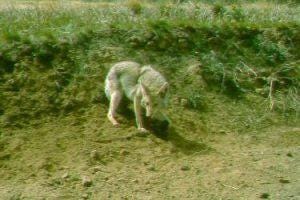

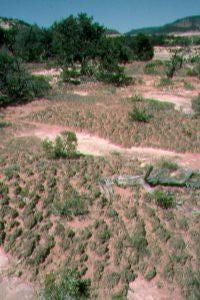


Clarifying what cattle are doing to federally owned Wilderness Areas is very enlightening. I would like to minimize/eliminate cattle use in these areas. Your words, George, offer me hope. Your analyses and descriptions of the dynamics and pressures of cattle versus wild animals and plants is an exciting adventure. I hope I do my part from what I learn from it.
Thank you. Larry Drummond